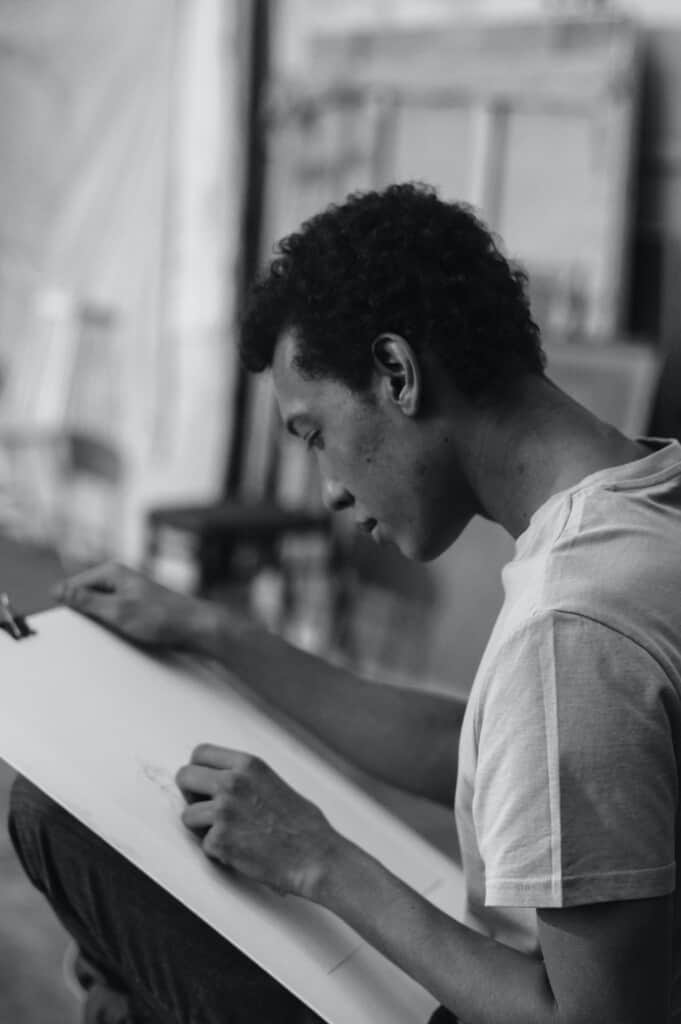If you're an aspiring artist and learning how to draw, you might sometimes find yourself feeling a little lost. Sometimes sketches can be completed really quickly; other times, you might find yourself experiencing “artist's block” and struggle to draw anything at all.
Why do I draw so slow? The main reason people draw slowly is a lack of confidence in their own drawing skills. This is a common problem for many hobbyists to find portraits, figures, and complicated landscapes challenging to draw.
What could be some of the reasons that you're drawing so slow? And are there tips to speed up your drawing effectively without compromising on the quality of your work?
Let's explore these questions in detail.
Are You a Perfectionist?

When it comes to learning how to draw, the goal is to eventually get good enough that your drawing resembles your subjects as close as possible. However, if you want everything to be perfect all the time, you might struggle with drawing anything at all.
Ask yourself – are you a perfectionist? In other words, do you want everything to be just perfect in order to feel satisfied with your work?
If you're a perfectionist and learning how to draw, you might become easily discouraged if your initial tries do not match your expectations.
The key here is to recognize that drawing, like all skills, takes time. You're going to get some of it right and some of it wrong – it's the constant practice that helps you get better.
Related Posts You May Like:
How Can I Improve My Drawing Speed?
Gestural Drawing
One way to speed up your drawing is to practice gestural drawing. Gestural drawing is the drawing of a figure or a pose in quick, sketchy strokes. With gestural drawing, you're not trying to draw a full form with subtle details like facial features; instead, you're just sketching out the poses or the characters' movement that you're drawing.
The purpose of this is to study human figures in motion. For example, you might want to draw a few figures in various dancing poses. Remember, the idea is not to go for small details – it's about doing rough sketches of the figures' overall posture.
To practice this, you can either draw from live models or if that's not possible, you can always draw from photographs. Try to capture the figures' overall structure – where the limbs are at, and how the body is turned. Gestural drawings should not take more than a few minutes to complete.
The benefit of gestural drawing is that it trains you to draw quickly – after all, you're not spending time drawing small, intricate details, but concentrating instead of the figure's overall pose. Once you become more accustomed to gestural drawing, you can start treating it as a ‘warm-up' to get you ready for more detailed drawing. And when you do, you'll find yourself having the ability to draw faster.
Speed Sketching
Speed sketching is also an excellent method to improve your drawing speed. The clue is in the name – speed sketching. It's about looking at a picture or a scene and sketching it very quickly.
The idea about speed sketching is that you try not to pause for too long. You just keep sketching until you have a rough picture. The point of speed sketching is that you don't take too much time second-guessing yourself, erasing and redrawing parts of the picture. Instead, you sketch on and assess your drawing later.
The great thing about speed sketching is that it seeks to remove the one huge obstacle to drawing quickly – doubt. When you doubt yourself too much, you'll most likely get paralyzed and not go anywhere with your drawing. Instead of allowing this to happen, a better alternative would be to do some quick sketches and assess your work only once it's completed. Then you can work to improve your sketches the next time, and repeat the cycle until you get better and better.
Drawing Under Timed Conditions
When you spend hours and hours drawing something that you know should really only take a few minutes, set a timer for yourself to be an adequate remedy.
Drawing under timed conditions allows you to challenge yourself to see if you can focus your efforts to get the work done within a reasonable amount of time. When you have a running timer, you're more likely to gather your focus and energy towards the drawing task at hand.
For example, if you're practicing drawing a plate of fruits, try setting yourself an hour to finish the work. At regular intervals, check the timer to see how much time you have left. You must then calibrate your drawing speeds accordingly.
Once again, the point of this task is not to achieve drawing perfection at your first try. Instead, it's about building the discipline to draw at a certain speed. Remember, practice makes perfect. It's the amount of practice you devote to draw that delivers results, not the amount of time you spend pausing when drawing.
Conclusion
Drawing is a fun activity that everyone should get involved in. If you ever get stuck and find yourself drawing too slowly, remember that there are ways to speed up the process. The most important thing is to enjoy the entire process from start to finish.

